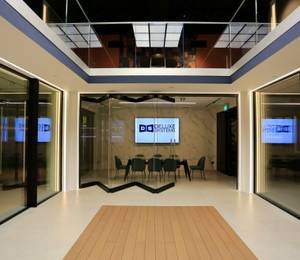Accessible design had traditionally always been based on a response to physical limitations. Life in the pandemic has brought out the importance of mental and emotional wellbeing in stark relief. At the heart of our design process is the approach of inclusivity rather than accessibility. Our spaces respond to this ever-present need for compassion in the space.
Our post-COVID design process looks at two important spatial challenges. First, there is a need to reconcile the highly collaborative work styles which have emerged in institutions and workplaces with a need for social distancing. Access to collaborative spaces thus becomes an important aspect of inclusion. Second, there is a need to ameliorate the shock of returning from the calm of one’s home to the energetic work environment. Here, we look at placing quiet zones and biophilic environment solutions within contextually designed spaces to alleviate social, emotional or mental anxieties.
Culturally speaking, the ‘break’ of 18 months, has created space for dialogue to reassess our attitudes towards inclusion in a more holistic manner. In many of our projects, thanks to the ability to connect globally on virtual platforms, clients, architects and users have been able to establish a common ground for what inclusion means to their organization or institution. This has allowed us to slowly realize our practice’s policy towards inclusion which is ‘no-one left behind’.












